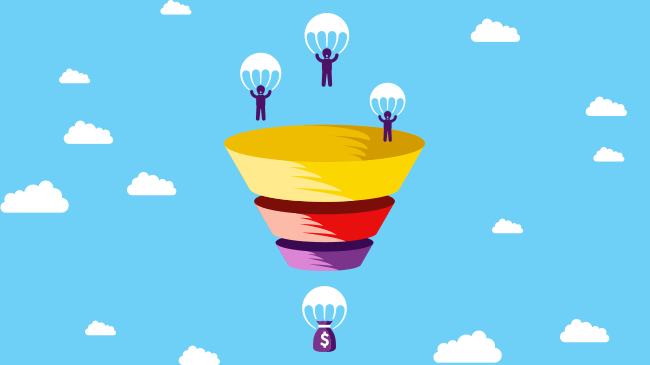Facebook’s Ad Targeting Has Changed – The Scoop
Data privacy changes are shaking up the internet right now, and if you use Facebook ads to market your business, those changes affect you. Facebook is dropping all targeting options that relied on their data partners.
For the vast majority of small businesses advertising on Facebook, the targeting changes aren’t a big deal. They’re not likely to cut into your revenue very much, if at all. Some minor strategy changes are all you need.
In other words, we’re not panicking.
Remember that Facebook makes most of its money from advertisers. They want to keep people on the platform, and that means keeping their advertising options effective so you come back and buy more exposure. Even without partner data, there’s still a lot you can do to get your business in front of the right people on Facebook and Instagram.

How Facebook Targeting Changes Affect Your Business
Targeting based on 3rd party data is going away, but you can still create audiences using the stuff Facebook learns from engagement.
A lot of people are just learning about this partner data for the first time. Basically, Facebook used partnerships with a handful of data companies who collect behavioral and demographic information, and they let advertisers use that information for ad targeting.
Those disappearing 3rd party data categories include:
- Credit card spending habits
- Home ownership
- Investments
- Income
- Purchase behaviors
These groups are made of a lot of really specific audiences. For example, under purchase behavior categories, you can target things like gadget enthusiasts, trendy homemakers, people who buy men’s big and tall clothing, people who buy computer software, high-end retail shoppers, fishers, cyclers, people who spend money on business marketing. You get the point.
Most of the partner categories were like these – pretty granular and super valuable for ad targeting…if you know how to use them.
For most small businesses using the platform, though, losing these categories isn’t a deal breaker. In fact, there’s a good chance you weren’t even heavily using this data to begin with.
Some industries are likely to feel a little more of an impact from the loss.
For example, real estate professionals can no longer target ads to people who are “likely to move in the next 6 months.” Remember, though, that these kinds of audiences were based on statistical likelihood, not psychic predictions. While useful, it was never indispensable.
In other words:
Targeting based on behavior is really cool, but it’s not magic.

Using Facebook’s targeting is a small part of your marketing strategy, and it has always taken pro-level skills to use it to its full potential. Those pro marketing skills are adaptable, so you’ll be fine even if you were using partner data before.
You might notice that it costs a little more to extend your reach. If you’re tracking your metrics, you may also see your cost per click go up a little. The difference in lead cost will probably be a matter of cents, not dollars. Advertisers on a smaller scale may or may not even see a change.
As always, creating a great social media strategy goes a lot deeper than targeting.
Running Effective Facebook Ads
When we at NeONBRAND first heard that some targeting options were going away, we had a very sensible minor freakout. We’re a marketing agency. Facebook ads are a huge part of our lives.
Then, after we took a couple of breaths, we realized that even a major, sweeping change to Facebook’s ad platform wouldn’t be a real problem. We’re a marketing agency. We’re really good at figuring this stuff out and getting results.
Losing third party data isn’t a dramatic change by any means. It’s just a little inconvenient.
Here’s the thing about Facebook ads:
Social media advertising is all the way at the very top of the sales funnel. It’s the same kind of marketing that includes billboards, radio ads, TV commercials, ads in magazines, and 90s internet popups. The entire goal of top-of-the-funnel advertising is just to get people used to seeing your brand.
Consumers very rarely make a purchase because of a social media ad. They might watch your video, like your post, or even click through to your site, but they’re not ready to buy anything just yet.
Retargeted advertising takes it a little further by tracking who shows interest and showing them more specific ads. That’s where the Facebook Pixel and retargeting strategy comes in.
The Pixel lets you show ads to people who have visited your website, targeting your most interested prospects based on their specific behavior. That’s how you run truly powerful ads on social media – the regular ad targeting just gets you to the point where you have prospects to make retargeting work.
Facebook has some really cool custom audience options that let you target people who have engaged with your page, watched your video, or clicked a button on your profile.
Let’s imagine you just posted a video. You could send one retargeting ad to people who watched your video all the way through, and a different ad to people who visited your website. From there, you can decide how you want to move them down the funnel.

In the post-Partner Categories reality, retargeting has only gotten more important. Use Pixel to get to the most engaged people, and you’ll end up with an audience of people who are likely to convert.
Also, don’t worry too much about annoying your customers with retargeted ads. Being annoying and being effective are kind of the same thing.
Closing the deal happens at the bottom of the sales funnel, not the top. It’s up to you and your sales team to turn the leads generated by social media ads into actual paying customers. That process is all-important, and it doesn’t happen on Facebook.
In other words, your social media marketing strategy is just fine.

